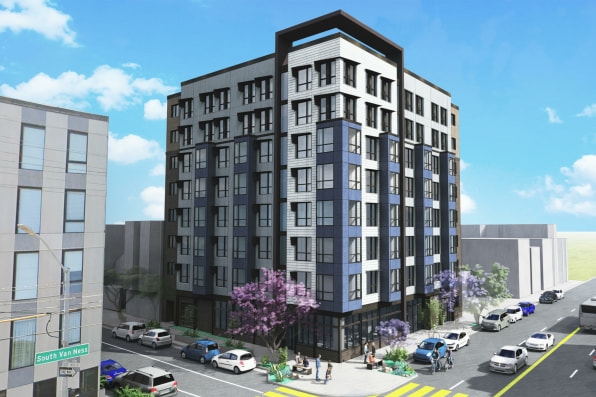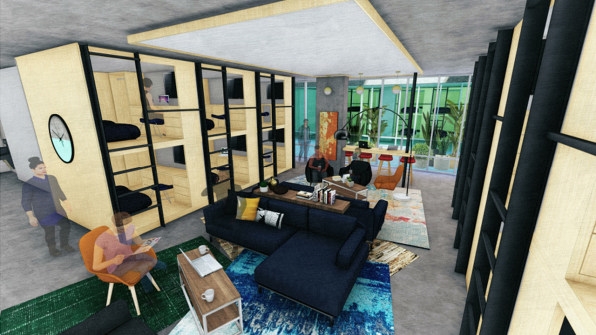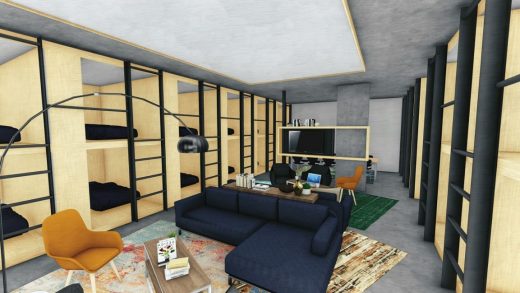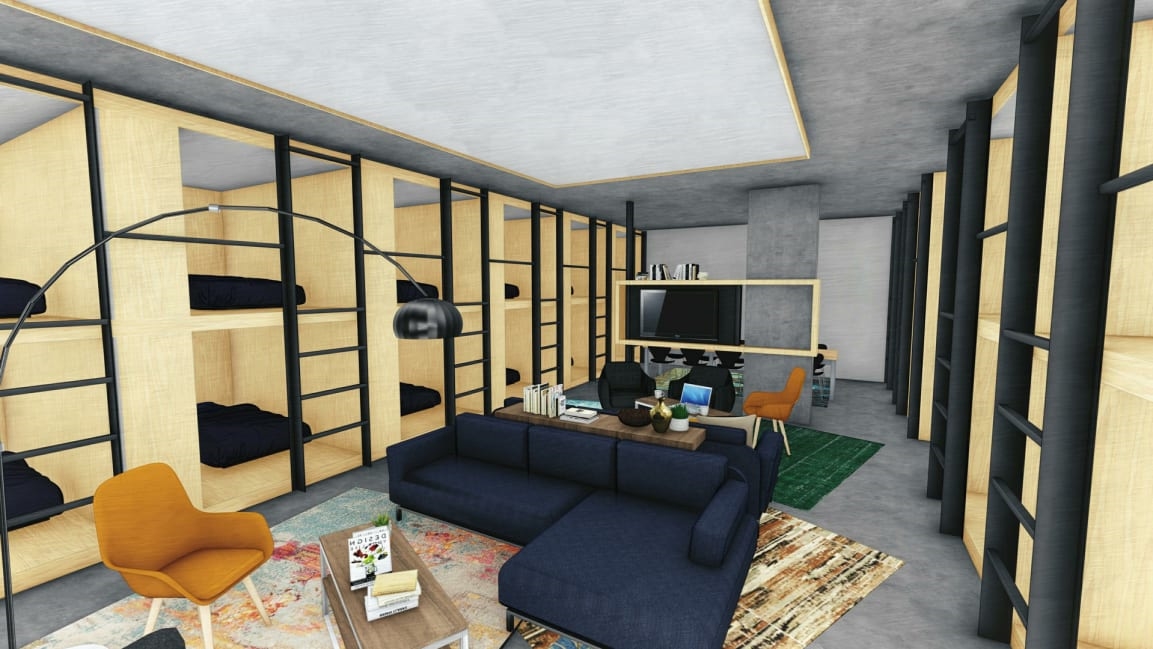Housing in SF is so bleak, this developer wants to build underground “sleeping pods”
The convergence of wealth in Silicon Valley continues to wreak havoc on the housing market. The average one-bedroom rental apartment in San Francisco is now $3,500 or more. Supply can’t keep up with demand, even for people working at some of the most valuable companies in the world, let alone anyone with a normal, middle-class day job.
In turn, developer Helsey Holdings—a Kansas-based company with residential buildings across the United States—has proposed to build and operate two new apartment buildings on what are now parking lots in San Francisco’s Mission District. The renderings show completely typical apartment buildings on the outside, but inside, the structures have been aggressively optimized for the budget-conscious—so much so that physical intimacy would be off limits.

The buildings feature 200-square-foot micro apartments that would rent for around $2,000 a month. Those are the luxurious units, comparatively. Because down in the basement floors, the developers are proposing something novel: a shared living space with a kitchen, recreational area, and 88 plywood “sleeping pods” for those on a limited income. Starting at an estimated $1,000 a month, the pods may be fitted with curtains, but they cannot close with a solid door due to city regulations. So they’re more like bunkbeds you’d find in a hostel than the capsule hotels from Tokyo.
The idea of placing bunks in the basement was that of Chris Elsey, lead developer on the project—who tells us he designs, builds, manages, and finances all of his projects. What inspired him? “In a word, affordability,” says Elsey, who speaks in a firm Kansas drawl. “I mean, that’s the big problem. San Francisco, you know, kind of prides itself as being this inclusive, diverse place, yet, if you look at housing stock, there’s no diversity in the housing stock. You have to be a very wealthy person to live in the city of San Francisco.”

His goal was to build the most affordable market-rate building he could, rather than create expensive units that could be afforded by some and subsidized by the government for the rest. (In San Francisco, there’s a pool of rare, rent-controlled apartments; to get one, renters have to win a lottery, and currently, 25% of all new construction in San Francisco has to be earmarked toward this program.) That cost savings led to all sorts of optimizations. He capped the structures at eight floors, which allowed him to build with a cheaper mix of wood and concrete, rather than adopting full concrete as code would require a taller building to do. It also meant giving up on the one-bedroom and two-bedroom ideal.
“If you just keep doing what you’ve been doing, building a bunch of one-bedroom and two-bedroom apartments, that’s kind of the definition of insanity!” Elsey says. “If you keep doing exactly what you’re doing, why would you expect a different result?”
Elsey says he needed to maximize usable space below grade to make the buildings cost effective, too. The basements actually have full-size windows, because a central courtyard has had earth removed to maximize light (and because all bedrooms in San Francisco have to, technically, have one window). So the plywood bunks where renters will sleep all share common windows to make the setup legal.
Yes, this sounds downright grim, but Elsey doesn’t see things this way. He believes that such a design is perfectly humane, and in fact, more humane than handing over this budget, basement real estate to bike storage as many buildings do. But he also argues that living in a central location of the city, for an affordable price, has to intrinsically come with trade-offs. For instance: As manager of the building, he believes people in the pods shouldn’t have sex, which means, the units do provide shelter, but they can’t quite meet Maslow’s full hierarchy of needs.
“Anyone who has had roommates in a dormitory-like arrangement, is it appropriate to have intimate relationships in a public setting? I’d say probably not,” says Elsey. “A component of intimacy is privacy. That’s what you’re giving up in a congregated living arrangement; you’re basically giving up some privacy.”
The two apartments have not yet been approved for construction. Elsey has submitted a proposal to the city’s planning department but has yet to hear back. If and when the projects are greenlit by planning, he says he would submit final construction plans to the city. The city would also need to approve the plans before the projects could move forward.
But what about Elsey, who is not native to the area: Would he be willing to live in a pod? “Sure, yeah,” he says in a tone that sounds less than convincing. “I mean, I think for people, like, why do I want to live in the city of San Francisco? I want to live in San Francisco so I can go experience the cool things the city has to offer. But if I’m pouring $3,000 a month in every paycheck to the place I sleep at night, I don’t have the income to do the things I want to do.”
(34)



